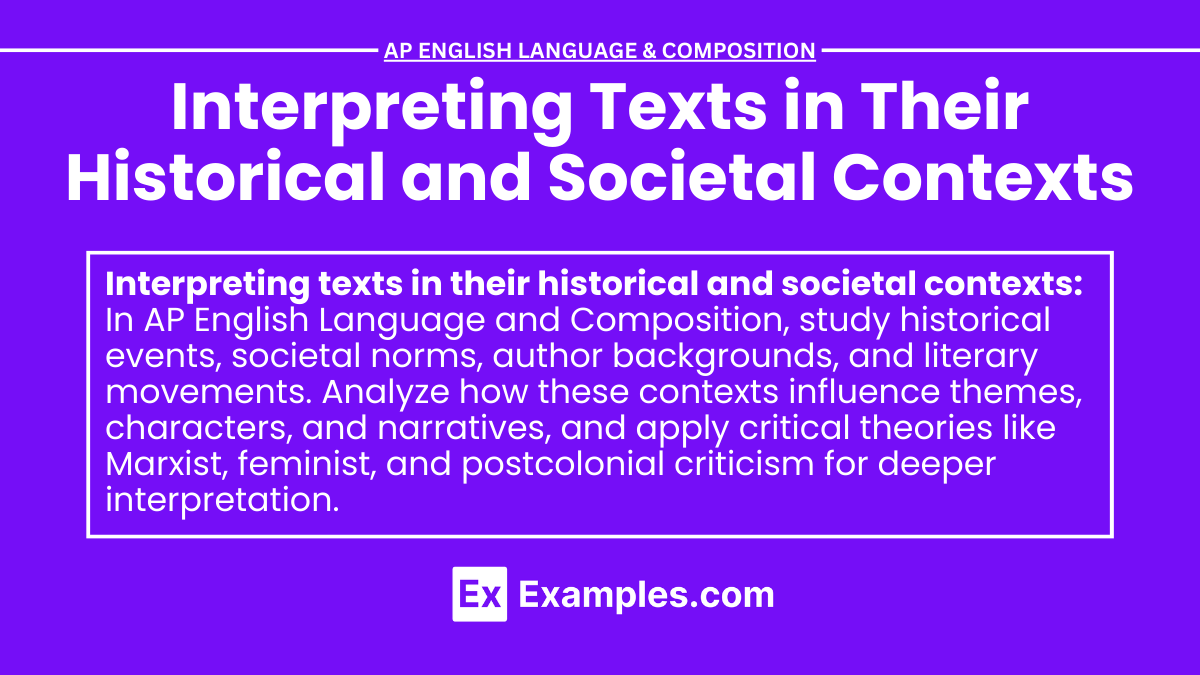In AP English Language and Composition, understanding the significance of interpreting texts in their historical and societal contexts is essential for crafting rhetorical sentences and cumulative sentences that enhance argumentative speech and argumentative writing. By analyzing the time period and cultural environment in which a text was written, students can uncover deeper meanings and themes, thereby enriching their arguments and critical analyses. This approach not only strengthens the structure and persuasiveness of their essays but also allows for a more nuanced and comprehensive understanding of the literature.
Learning Objectives
The learning objectives for understanding texts in their historical and societal contexts in AP English Language and Composition include mastering the use of cumulative sentences to build complex arguments, crafting explanatory essays and expository essays that effectively convey historical and cultural insights, employing rhetorical sentences to enhance persuasive writing, developing a final thesis statement that encapsulates the core argument, and applying critical thinking skills to analyze and interpret the influences of historical and societal factors on literary works.
Historical Context

- Definition: The historical context refers to the time period during which a text was written and the events, social conditions, and cultural norms of that era.
- Key Aspects to Study:
- Major historical events: Wars, revolutions, social movements, political changes.
- Technological advancements and their impacts.
- Economic conditions: Prosperity, depression, and their effects on society.
- Significant figures: Political leaders, influential thinkers, cultural icons.
- Application: Analyze how historical events influence the narrative, themes, and characters. For example, a novel written during the Great Depression may reflect themes of poverty and struggle.
Societal Context
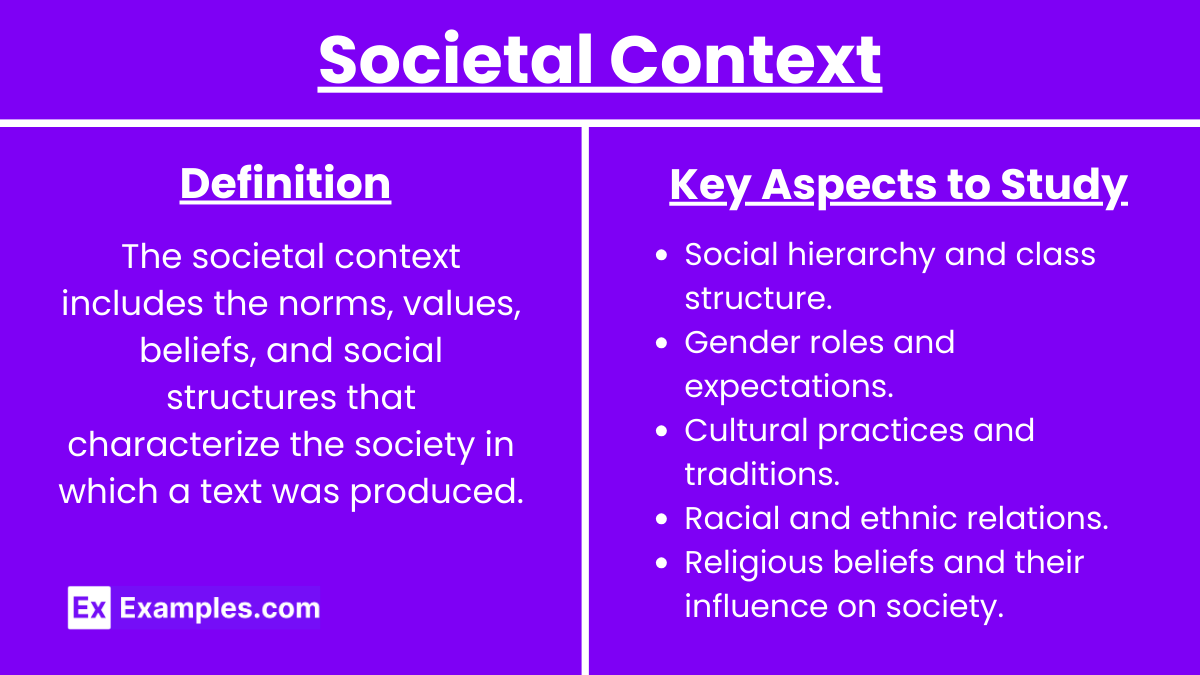
- Definition: The societal context includes the norms, values, beliefs, and social structures that characterize the society in which a text was produced.
- Key Aspects to Study:
- Social hierarchy and class structure.
- Gender roles and expectations.
- Cultural practices and traditions.
- Racial and ethnic relations.
- Religious beliefs and their influence on society.
- Application: Consider how societal norms and values shape the characters’ actions, conflicts, and the overall message of the text. For instance, a story set in a patriarchal society might explore themes of gender inequality.
Author’s Background and Perspective
- Definition: Understanding the author’s personal history, experiences, and worldview can provide insight into their work.
- Key Aspects to Study:
- The author’s biography: Life experiences, education, personal beliefs.
- The author’s other works and recurring themes.
- The author’s intended audience and purpose.
- Application: Analyze how the author’s perspective and background inform the text’s themes and viewpoints. An author’s personal experiences with discrimination, for instance, might influence their portrayal of social injustice.
Literary Movements and Influences
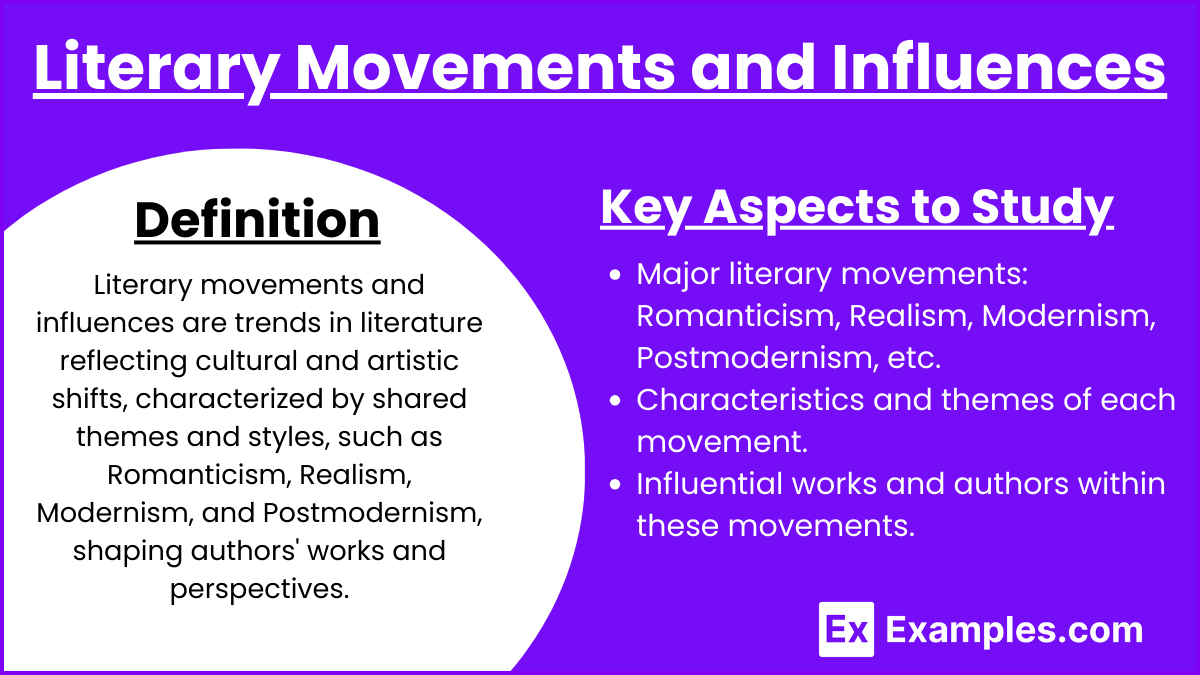
- Definition: Literary movements are trends in literature that reflect broader cultural and artistic shifts.
- Key Aspects to Study:
- Major literary movements: Romanticism, Realism, Modernism, Postmodernism, etc.
- Characteristics and themes of each movement.
- Influential works and authors within these movements.
- Application: Identify how the text aligns with or reacts against the prevailing literary trends of its time. A modernist novel, for example, might feature fragmented narrative structures and a focus on inner consciousness.
Interpreting Symbolism and Allegory
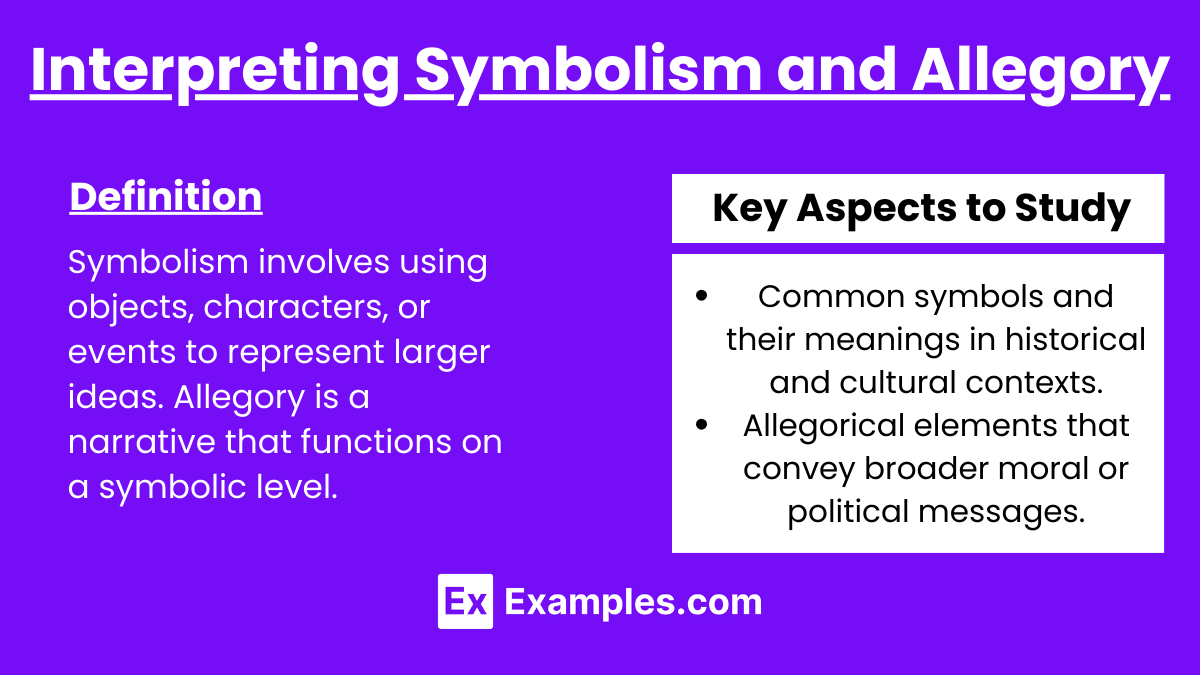
- Definition: Symbolism involves using objects, characters, or events to represent larger ideas. Allegory is a narrative that functions on a symbolic level.
- Key Aspects to Study:
- Common symbols and their meanings in historical and cultural contexts.
- Allegorical elements that convey broader moral or political messages.
- Application: Analyze symbols and allegories within the text, considering their historical and societal implications. For instance, a journey in a text might symbolize a quest for freedom or self-discovery.
Critical Approaches to Historical and Societal Contexts
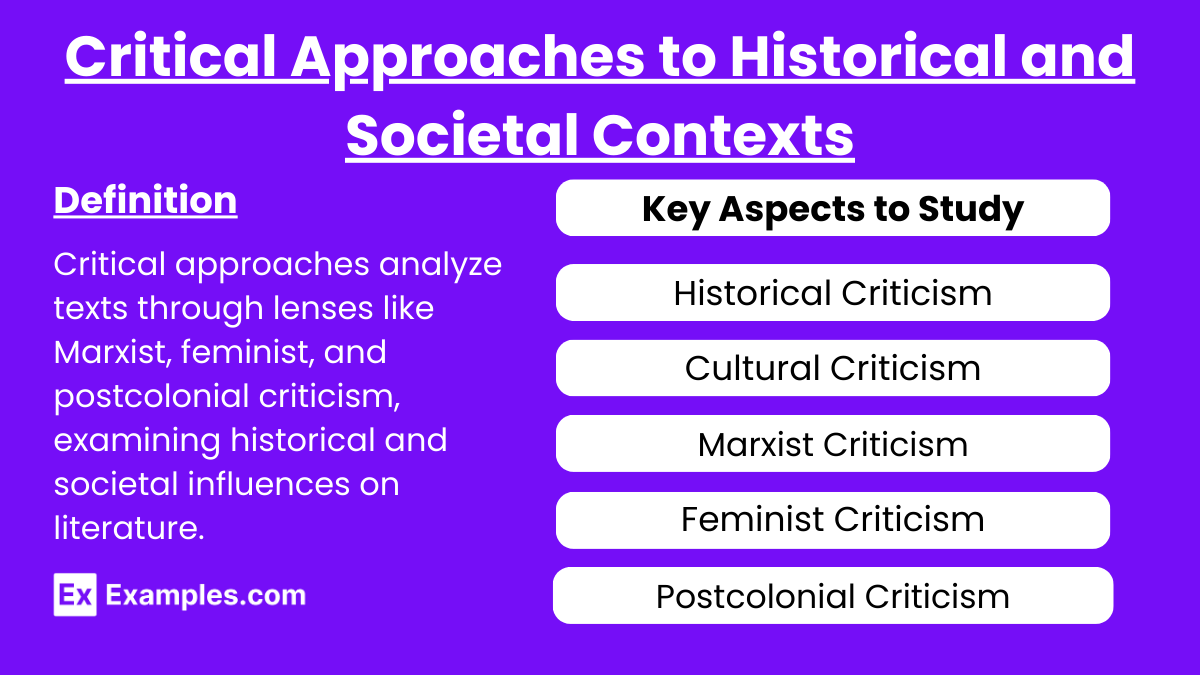
- Definition: Various critical theories provide frameworks for analyzing texts within their contexts.
- Key Aspects to Study:
- Historical Criticism: Focuses on how a text reflects its historical context.
- Cultural Criticism: Examines the cultural norms and practices represented in the text.
- Marxist Criticism: Analyzes class struggle and economic power dynamics.
- Feminist Criticism: Explores gender roles and relations.
- Postcolonial Criticism: Investigates issues of power, colonization, and cultural identity.
- Application: Use these critical lenses to deepen your analysis of the text’s historical and societal contexts. For example, a Marxist reading might focus on class conflict and economic disparity in a novel.
Comparative Analysis
- Definition: Comparing texts from different historical and societal contexts can reveal how these influences shape literature.
- Key Aspects to Study:
- Similar themes and how they are treated in different contexts.
- Differences in characters’ responses to societal pressures.
- The impact of historical events on narrative style and content.
- Application: Compare how different authors address similar themes in various historical and societal contexts. This can highlight the universality or specificity of certain experiences.

